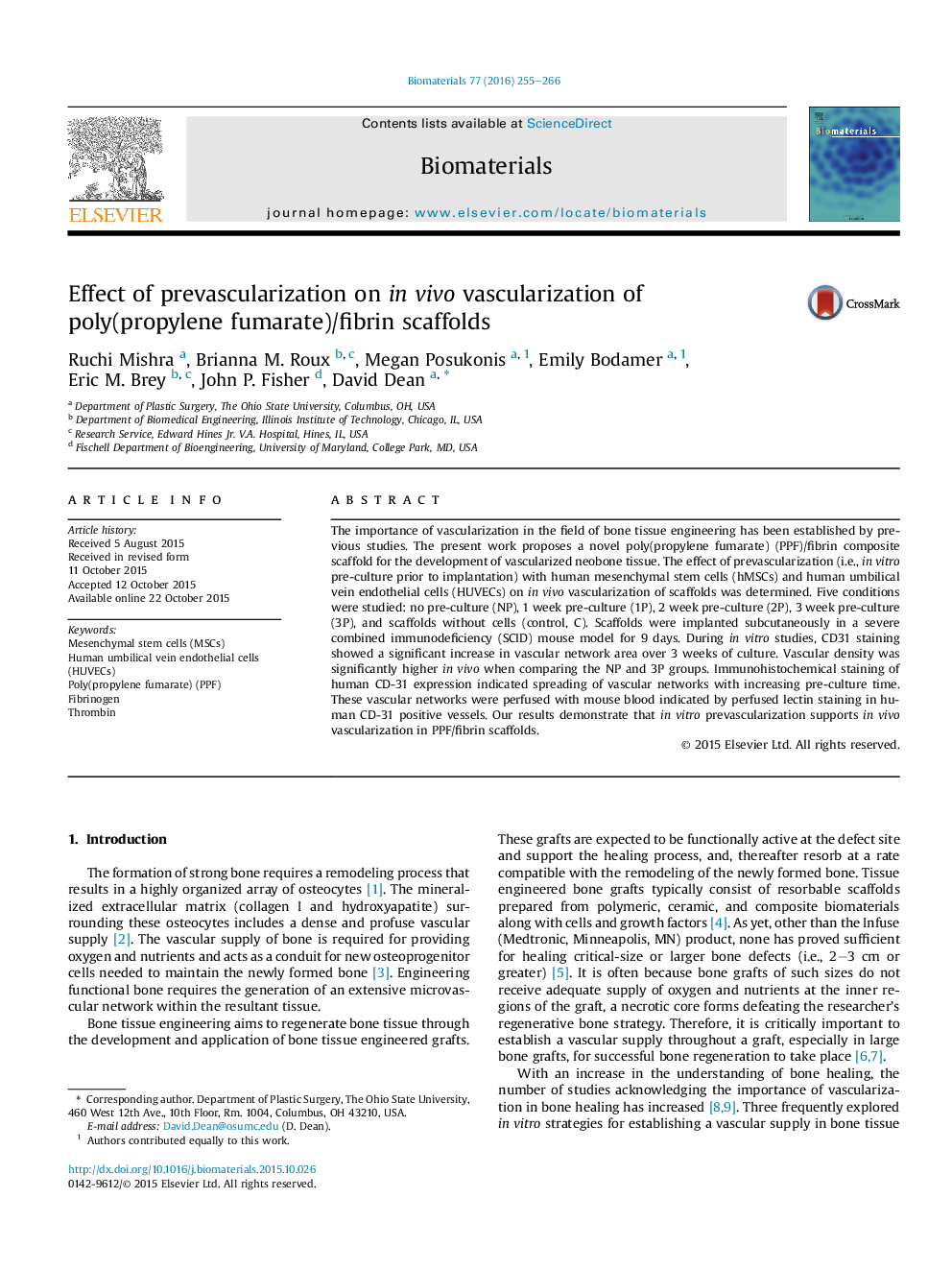| Article ID | Journal | Published Year | Pages | File Type |
|---|---|---|---|---|
| 6485252 | Biomaterials | 2016 | 12 Pages |
Abstract
The importance of vascularization in the field of bone tissue engineering has been established by previous studies. The present work proposes a novel poly(propylene fumarate) (PPF)/fibrin composite scaffold for the development of vascularized neobone tissue. The effect of prevascularization (i.e., in vitro pre-culture prior to implantation) with human mesenchymal stem cells (hMSCs) and human umbilical vein endothelial cells (HUVECs) on in vivo vascularization of scaffolds was determined. Five conditions were studied: no pre-culture (NP), 1 week pre-culture (1P), 2 week pre-culture (2P), 3 week pre-culture (3P), and scaffolds without cells (control, C). Scaffolds were implanted subcutaneously in a severe combined immunodeficiency (SCID) mouse model for 9 days. During in vitro studies, CD31 staining showed a significant increase in vascular network area over 3 weeks of culture. Vascular density was significantly higher in vivo when comparing the NP and 3P groups. Immunohistochemical staining of human CD-31 expression indicated spreading of vascular networks with increasing pre-culture time. These vascular networks were perfused with mouse blood indicated by perfused lectin staining in human CD-31 positive vessels. Our results demonstrate that in vitro prevascularization supports in vivo vascularization in PPF/fibrin scaffolds.
Keywords
Related Topics
Physical Sciences and Engineering
Chemical Engineering
Bioengineering
Authors
Ruchi Mishra, Brianna M. Roux, Megan Posukonis, Emily Bodamer, Eric M. Brey, John P. Fisher, David Dean,
